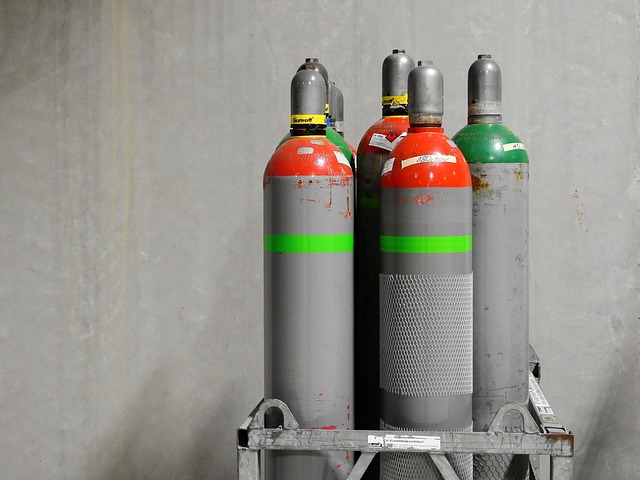Diagnosing boiler pressure problems starts with checking gauge readings and understanding manufacturer recommendations. Examine burner, combustion process, air intake system for damage or blockages. Refer to manual for adjustments, clean regularly to prevent low pressure caused by leaks or issues like air bubbles. Inspect heat exchanger integrity, maintain optimal water levels, check feed lines for blockages. Insulate, seal air leaks to stabilize pressure and improve efficiency. Analyze maintenance records, historical performance data to identify anomalies and distinguish between repairs and routine maintenance.
Diagnosing boiler pressure issues is crucial for maintaining optimal efficiency and safety. This comprehensive guide outlines essential steps, from checking critical pressure gauge readings to verifying insulation integrity and analyzing maintenance records. By inspecting the burner, evaluating the heat exchanger, testing water levels, and identifying air leaks, you can pinpoint problems effectively. These measures empower users to address boiler pressure concerns promptly, ensuring a smooth and efficient heating system operation.
- Check for Pressure Gauge Readings
- Inspect Burner and Combustion
- Evaluate Heat Exchanger Integrity
- Test Water Level and Feed
- Verify Insulation and Air Leaks
- Analyze Maintenance Records and History
Check for Pressure Gauge Readings

Checking the pressure gauge is one of the initial steps in diagnosing any boiler pressure issues. The pressure gauge displays the current pressure inside your boiler system, providing valuable insights into its performance. If you notice abnormally low readings, it could indicate a variety of problems, from leaks or air in the system to faulty components. In most cases, optimal boiler pressure should fall within the manufacturer’s recommended range, typically between 1 and 2 bars for most residential systems.
Understanding the boiler pressure settings is crucial, especially if you suspect a problem. The pressure settings control how much water is circulated through the boiler and can significantly impact its efficiency and safety. If your gauge reads consistently below the recommended level, it’s advisable to consult a plumber in Bromsgrove, as they can provide expert advice on whether it’s a minor adjustment or a sign of a more complex boiler pressure problem that requires professional attention.
Inspect Burner and Combustion

When diagnosing a boiler pressure issue, one of the first steps is to thoroughly inspect the burner and combustion process. Check for any visible signs of damage or irregularities in the burner assembly, as well as the condition of the air and fuel supplies. Ensure that the fuel is reaching the burner evenly and that there are no blockages or leaks in the air intake system. Proper combustion is crucial for maintaining optimal boiler pressure.
If you suspect a problem with the burner, refer to the boiler’s manual for specific boiler pressure reset instructions or boiler pressure settings explanations. In many cases, a simple adjustment or cleaning may resolve the issue. Keep in mind that low boiler pressure, indicated by a decrease in system pressure, could be a symptom of larger problems, such as leaks in the heating system or issues with the pressure relief valve. Understanding what does low boiler pressure mean is key to timely and effective troubleshooting.
Evaluate Heat Exchanger Integrity

When diagnosing boiler pressure issues, evaluating the integrity of your heat exchanger is a crucial step. A damaged or faulty heat exchanger can lead to significant drops in boiler pressure, as it hinders the efficient transfer of heat into the water. By inspecting for signs of corrosion, leaks, or any structural damage, you can quickly identify if this component requires repair or replacement. Regular maintenance and prompt attention to these issues are key to maintaining optimal boiler pressure levels and ensuring smooth operation.
Understanding what causes sudden drops in boiler pressure is essential for effective troubleshooting. Beyond heat exchanger problems, factors such as leaks in the system, air bubbles, or improper water treatment can contribute to low hot water pressure. Identifying the root cause allows for targeted solutions, whether it involves tightening connections, removing air from the system, or addressing water quality concerns. This proactive approach helps prevent recurring boiler pressure problems and promotes the efficient functioning of your heating system.
Test Water Level and Feed

The first step in diagnosing any boiler pressure issues is to check the water level and feed within the system. Maintaining the correct water level is crucial for optimal boiler performance. If the water level is too low, it can result in decreased heating capacity and potential boiler pressure problems. Ensure that the water level indicator is set at the recommended position, typically around 1/2 inch below the fill tube. Regularly top up the boiler with fresh water if necessary, especially after periods of heavy use or during colder months.
Monitoring the feed rate is equally important. An efficient feeding system ensures a constant and adequate supply of water to the boiler. If there are blockages in the feed line or issues with the feed pump, it can disrupt the water flow, leading to low boiler pressure. Regularly inspect for any signs of corrosion, leaks, or damage to the feed lines and address them promptly. By keeping an eye on these factors, homeowners can take proactive measures to prevent and fix low boiler pressure without necessarily calling a professional, thereby enhancing energy efficiency and saving costs.
Verify Insulation and Air Leaks

Checking for proper insulation and air leaks is a crucial step in diagnosing any boiler pressure issues. Insulation plays a vital role in maintaining optimal operating temperatures, preventing heat loss, and ensuring steady pressure levels. Over time, wear and tear can compromise insulation effectiveness, leading to energy inefficiencies and boiler pressure problems. Inspect the boiler’s exterior for signs of damage or disintegration, especially around seals and gaskets. Replace any damaged insulation with manufacturer-recommended materials to restore efficiency.
Air leaks are another significant contributor to boiler pressure instability. Even tiny gaps can result in significant pressure fluctuations. Common leak points include vents, pipes, valves, and connections. Utilize pressure testing or specialized detection tools to pinpoint these leaks. Sealing them appropriately will not only address the boiler pressure problem but also enhance overall energy efficiency, as understood through the lens of boiler pressure control and what is normal boiler pressure for your specific model.
Analyze Maintenance Records and History

Analyzing maintenance records and the history of a boiler system is an essential step in diagnosing any boiler pressure problems. These records provide valuable insights into previous performance, repairs, and maintenance routines. By comparing normal operating pressures with recent readings, technicians can quickly identify deviations that might indicate underlying issues. For instance, a sudden drop in pressure could be a red flag, especially if it’s consistent over several readings, suggesting potential leaks or reduced heating capacity.
Regular documentation of maintenance activities also helps establish a baseline for what constitutes typical behavior for that specific boiler. When low boiler pressure is observed, these records enable professionals to determine whether the issue requires immediate boiler repair or if it aligns with periodic maintenance needs. This historical data is crucial for troubleshooting and ensures that any anomalies are addressed promptly, preventing more severe boiler pressure problems in the future.
Diagnosing boiler pressure issues is a systematic process that involves multiple checks. By following these steps, including verifying pressure gauge readings, inspecting combustion, evaluating heat exchanger integrity, testing water levels, identifying air leaks, and reviewing maintenance records, you can effectively pinpoint the root cause of any boiler pressure problem. Regularly addressing these concerns ensures optimal boiler performance, safety, and longevity.
